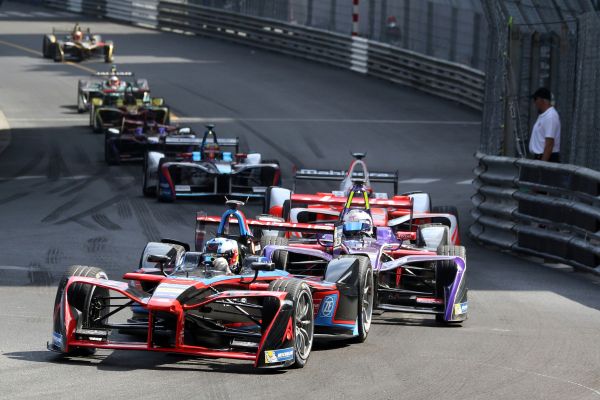When it comes to the thrill of high-speed competition and precision engineering, nothing matches the electrifying world of MotoGP. But what is MotoGP racing, and why has it captured the hearts of motorsport fans across the globe? This ultimate spectacle of speed, skill, and strategy brings together the best riders on the planet, mounted on cutting-edge machines capable of extraordinary performance. To understand MotoGP racing is to step into a world where courage meets technology on some of the most iconic tracks in the world.
Understanding the Essence of MotoGP Racing
MotoGP racing is the premier class of motorcycle road racing events held under the sanction of the Fédération Internationale de Motocyclisme (FIM). Unlike other racing formats, MotoGP represents the pinnacle of two-wheeled motorsport. The motorcycles used in this championship are purpose-built prototypes that are not available for public purchase, nor are they road-legal. These machines are fine-tuned marvels of engineering, designed solely for performance on the racetrack.
What sets MotoGP apart from other motorcycle racing formats is its global appeal and competitive depth. It features a roster of elite riders from around the world, each backed by powerful factory teams such as Ducati, Yamaha, Honda, KTM, and Aprilia. The races are staged on world-renowned circuits from Europe to Asia, each offering unique challenges in terms of layout, elevation, and climate.
The Origins and Evolution of MotoGP
To fully appreciate what MotoGP racing is today, one must explore its rich history. The championship traces its roots back to 1949 when it was launched as the FIM Road Racing World Championship. Over the decades, the series evolved through various classes and regulations. Initially, the championship included multiple engine capacities, including 50cc, 125cc, and 500cc. However, it was the 500cc class that became the most prestigious, eventually transitioning into the modern-day MotoGP category in 2002.
With this transition came a significant leap in technology and competition. The motorcycles began using four-stroke engines, and innovation soared. Since then, MotoGP racing has become a breeding ground for advancements in aerodynamics, electronics, and materials science—all of which influence the development of consumer motorcycles.
What Makes MotoGP Racing Unique?
At its core, what defines MotoGP racing is the delicate balance between man and machine. Riders must master not only raw speed but also the nuances of braking, cornering, and acceleration. Each race demands impeccable strategy and split-second decision-making. The races usually last between 40 to 45 minutes, during which riders must manage tire degradation, fuel efficiency, and track conditions while maintaining high speeds.
Another defining element is the sheer diversity of tracks. Whether it’s the sweeping corners of Mugello in Italy, the tight turns of Sachsenring in Germany, or the heat of Sepang in Malaysia, every circuit introduces new variables that challenge even the most seasoned racers. This variety ensures that the championship remains unpredictable and fiercely competitive throughout the season.
The Gear Behind the Glory
Understanding what MotoGP racing entails also means examining the gear that makes it possible. Riders wear specially designed leather suits embedded with armor and airbag technology to protect against high-speed crashes. Their helmets are constructed using carbon fiber and feature advanced ventilation and impact resistance systems. Gloves and boots are equally critical, designed to provide both protection and tactile feedback during intense racing conditions.
Equally important is the machinery. MotoGP bikes are equipped with telemetry systems that allow teams to monitor every aspect of performance in real time. From throttle input to suspension compression, data is constantly analyzed to improve both rider performance and mechanical efficiency. These motorcycles are capable of reaching speeds exceeding 350 km/h (217 mph), making safety measures not just a priority but a necessity.
Rules That Define the Championship
To answer the question “What is MotoGP racing?” completely, it’s essential to understand the structure and rules that govern the competition. Each MotoGP season consists of a series of Grands Prix held on different continents. Riders accumulate points based on their finishing position in each race, with the ultimate goal of clinching the World Championship title.
Technical regulations are strict, ensuring a level playing field while promoting innovation. For instance, there are limits on engine usage throughout the season to encourage efficiency and reliability. Tires are standardized and provided by a single supplier, ensuring that no team gains an undue advantage in grip and performance. Additionally, qualifying sessions determine starting grid positions, and the introduction of sprint races has added an extra layer of excitement to the weekend schedule.
Penalties, time deductions, and ride-through procedures are enforced to maintain fairness. Whether it’s exceeding track limits or causing avoidable contact, riders are held accountable, ensuring the sport remains safe and competitive.
Training, Strategy, and Mental Resilience
While the spotlight often shines on speed and spectacle, the underlying elements of MotoGP racing involve relentless preparation. Riders undergo rigorous physical training to endure the G-forces and stamina required during races. Core strength, reflexes, and cardiovascular fitness are prioritized, as even a minor lapse in focus can mean the difference between victory and disaster.
Beyond physical demands, mental resilience plays a pivotal role. Riders must navigate high-pressure environments, make instantaneous decisions, and bounce back from setbacks such as injuries or mechanical failures. The synergy between rider and crew is critical, as strategies are fine-tuned in real-time to adapt to race conditions. Pit boards, radio communication, and hand signals all contribute to this intricate dance of coordination and execution.
MotoGP’s Impact on Motorcycle Culture
Exploring what MotoGP racing is would be incomplete without acknowledging its cultural impact. The championship has a massive global following, with fans drawn not just to the races but to the stories behind each rider. Legends like Valentino Rossi, Marc Márquez, and Jorge Lorenzo have become household names, inspiring countless enthusiasts to take up motorcycling as a sport or hobby.
Moreover, the innovations born on the MotoGP circuit often trickle down to consumer bikes. From advanced braking systems to improved fuel injection technologies, what begins in MotoGP often finds its way into everyday motorcycles, enhancing safety and performance for riders everywhere.
The Future of MotoGP Racing
MotoGP continues to evolve with the changing times. Sustainability is becoming a growing concern, prompting discussions around alternative fuels and environmentally conscious technologies. At the same time, the championship seeks to nurture young talent through programs like the MotoGP Academy and Red Bull Rookies Cup, ensuring the next generation of champions is always in the making.
Technological advancements show no signs of slowing down. With increasing integration of artificial intelligence and machine learning in performance analytics, the future of MotoGP promises even greater precision and innovation. Virtual reality and enhanced broadcasting techniques are also transforming how fans engage with the sport, making MotoGP racing more immersive than ever before.
Conclusion: A Symphony of Speed, Skill, and Spirit
So, what is MotoGP racing? It is more than just a high-speed competition. It is a celebration of human daring and mechanical mastery, an arena where passion meets precision. From its historic origins to its modern-day evolution, MotoGP represents the cutting edge of motorcycle sport, drawing in millions with its unique blend of excitement, danger, and drama. Whether you’re a lifelong fan or a curious newcomer, the world of MotoGP invites you to experience racing at its finest—a symphony of speed, skill, and spirit that continues to redefine what is possible on two wheels.







